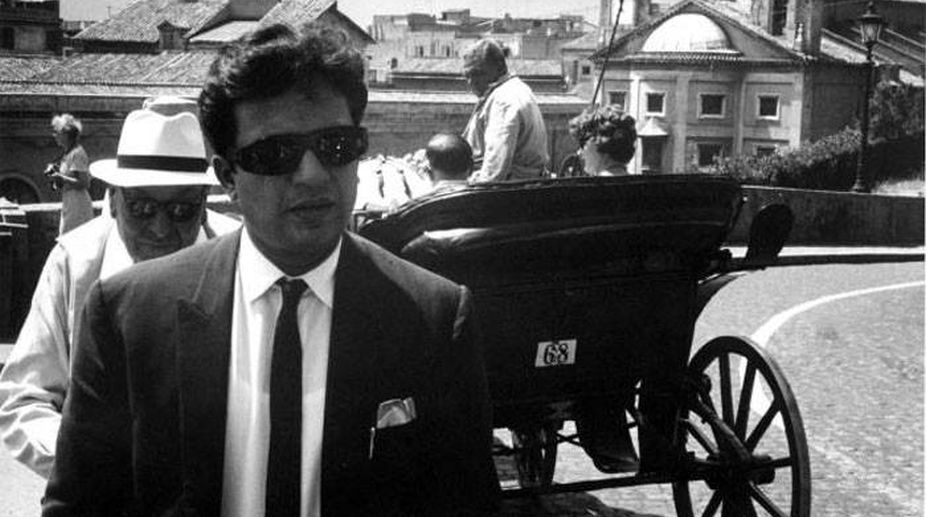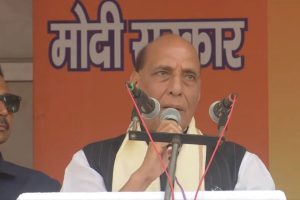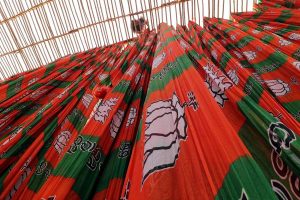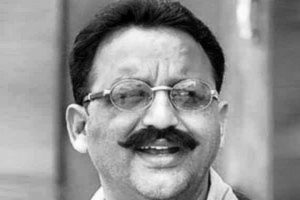Once a year, lovers of Bengali cinema, get an opportunity to be reacquainted with not only a slice of history but with the golden years of romance and music on the screen.
However much the cinema in this region, as elsewhere, may have thrived on the technology that has prompted filmmakers to look ahead with new ideas and experiments, there seems to be no escape from the past that still has so much to offer.
Ironically, the occasion is the death anniversary of Uttam Kumar, still regarded as the most enduring icon of Bengali cinema whose mass appeal had cut across age groups and social barriers. For some mysterious reason, single screens are not permitted to show films from the black and white era.
That makes it difficult for the present generation to get the real feel of some of the best films made before the arrival of colour. The digital format enables a viewing now and then of classics on the small screen but that seldom matches the excitement of watching Uttam Kumar on a motor cycle speeding down a winding road in the cosy company of Suchitra Sen with an unforgettable song on their lips.
Fortunately, the Shilpi Samsad that Uttam Kumar had set up half a century ago is still around to present a selection of his films that reflect the variety and versatility of the hero’s work on the big screen.
The session offers no more than a modest impression of an actor who grew from the struggling aspirant with a string of early failures to the commanding heights of Amaanush and Sanyasi Raja. Sadly, many of his films are lost on account of inadequate preservation arrangements.
One may never get to see Shankarnarayan Bank, Necklace, Chirakumar Sabha, Nishithey,Jadubagsha,Gali Thekey Rajpath, Saharer Itikatha, Tasher Ghar, Nagar Darpaneand countless others that represent the most productive years of the 1950s and 60s when almost anything that had the face of the hero had struck gold.
This is a lesson that can still be learnt by those who keep recalling the charisma but go on to make no more than token gestures. Nevertheless, the effort made by Shilpi Samsad deserves appreciation. The films that revive fond memories can be expected to draw capacity audiences.
It should help sustain the objective of reaching out to people, connected with films, who have gone into retirement and need support. It is good to know that his films still serve a worthy cause but there is obviously a lot more that needs to be done. But the occasion should come alive through not just the films but a larger collection of posters, booklets and publicity material. It could pave the way for research on much more than the films which embraced larger aspects of culture — from music to literature, from lifestyles to social changes.
Uttam Kumar had covered an extraordinary range — the tragedy of the servant in Tagore’s Khokababur Pratyabartan was extended to the tragedy of the feudal master in Bimal Mitra’s Stree. To that extent, there should be a lot to discover. Sarey Chuattar was a rip-roaring comedy with popular names that later figured in supporting roles —Tulsi Chakraborty, Bhanu Banerjee, Jahar Roy and even singers like Dhananjoy Bhattacharya, Shyamal Mitra and Manabendra Mukherjee. Today’s audiences would be surprised to find Suchitra Sen and Uttam Kumar making comparatively minor contributions in the 1953 film.
That was just before the pair gave romance an interesting turn, starting with Agni Pariksha. It was nothing short of a sensation lasting more than a decade. Sagarika belonged to that period which was also immortalised by songs that never get stale.
One such song about the wandering vendor (neelamwala) will be heard in Prithibi Amare Chaye where Uttam Kumar had teamed up with Mala Sinha to tell a simple story of love that rises above social barriers.
An equally productive chemistry existed with Sabitri Chatterjee from the early years of Shyamali to Dhanni Meye and Mouchak. The session includes the 1959 film Abak Prithibi that traces the journey of the dropout with inherent qualities of an achiever. These were films that had left striking impressions on the middle class that loved romantic fantasies built round recognisable personalities.
Uttam Kumar thrived on scripts that offered clearly defined characters. That was why he could act in a series of films with Aparna Sen, Arati Bhattacharya and Sumitra Mukherjee who were much younger but where the idea was strong enough to sustain the difference in age.
One such film, Bikeley Bhoorer Phool, should illustrate the point while Bicharak (made in 1959 with Arundhati Mukherjee) and Sesh Anka (made in 1963 with Sharmila Tagore) remain classic examples of how Uttam Kumar could move away from conventional romance into more challenging areas of psychological drama and polished crime. The cinema has changed drastically since the black and white era of romance, comedy and crime.Technology has helped filmmakers keep pace with social changes and perhaps generate new expectations.
What hasn’t changed is the yearning for reflections of the cultural roots that finally make the difference between a short-term exercise and an all-time favourite.
Even when his films were uneven in quality, Uttam Kumar himself belonged to the second category. His films still manage to keep alive a broken legacy.











